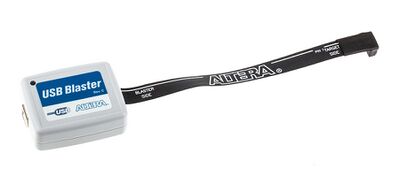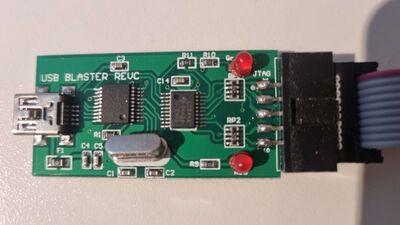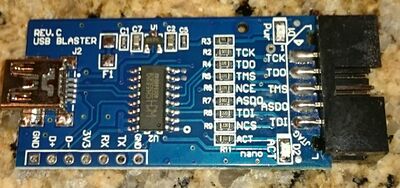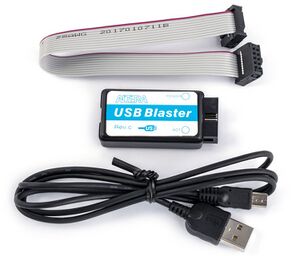CPLD programming
(Re)Programming/flashing the CPLD (nicknamed "Absinth") should normally not be needed. If there should a currently unknown bug which inhibits the ATW800/2 from working properly, it might be necessary.
The firmware is stored inside the flash memory build into the CPLD and requires special hardware, cable and software to reprogram it.
Hardware
This hardware is called USB Blaster and was originally made by Altera (now Intel), the manufacturer of the CPLD used on the ATW800/2. This programmer is still available but quite costly for a hobbist and especially for a "one shot task" like updating a firmware once every 2 years.
So quite soon the market was swamped with cheaper clones and even cheaper know-offs. To make things worse, the clones all look the same! You can't tell them apart from just a photo, you need to see the inside.
The good
As said, the original USB Blaster from Altera still available at Mouser and the like. Prepare for $/€250+. Even used ones are quite expensive still.

This original USB Blaster has a flex-cable attached to the case and ALTERA markings all over the place.
The bad
Around 2005 the first clones appeared on the market. Initially they were 1:1 copies. Those obviously work fine but are hard to find now. Then they started to replace the original controller (EPM3032) with cheaper ones, which did the same job... somehow. YMMV.
All clones you can buy now do look more or less the same.
With those clones, you usually get a ribbon cable (2x5 connectors) and and a Mini(!)-USB to USB-A cable to connect it to your PC.
To make sure which version you're buying, you would need to open the case to have a look at the PCB inside. Here's my version (from ~2010) with works quite OK with the Altera tools:

You can spot 2 ICs and an oscillator. One IC is managing USB the other does the protocol handling with the CPLD/FPGA. But those are rare now.
...and the ulgy
As of today, most USB Blasters offered on Amazon or AliExpress are clones of clones of clones. Most of them are reduced to a single chip named CH552 which is a clone of an 8051 which was used in earlier clones.

Software
To make things worse, the CPLD is long time EOL and so is the software needed to program that thing. The software is still available for free but it does not play well with recent OS versions. The most recent supported Windows is version 10, the Linux version comes in a huge (4GB) VM image incl. the Linux kernel etc. which is IMHO a total overkill for just programming the CPLD.
That said, we recommend using a (virtual) Windows XP, 7 or 10 installation with the programming tool provided in our public share, wich is a comparably mere 122MB, located in "Firmware\CPLD_Absinth".

